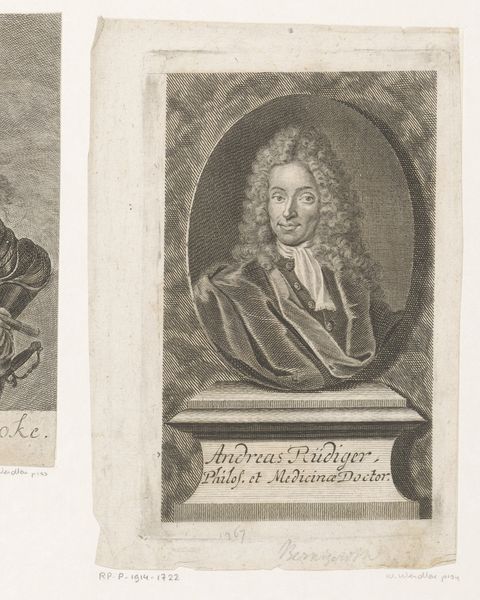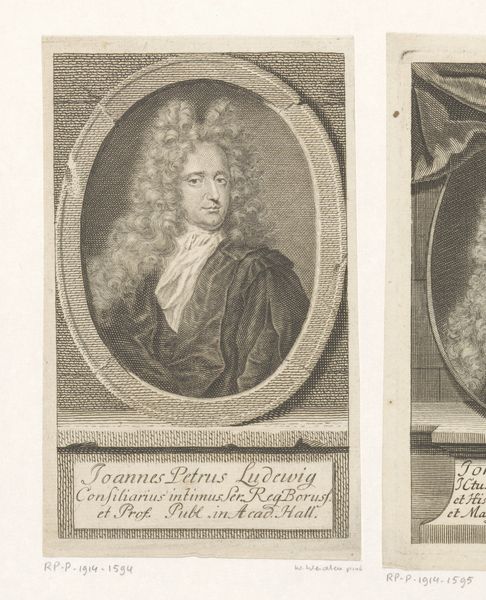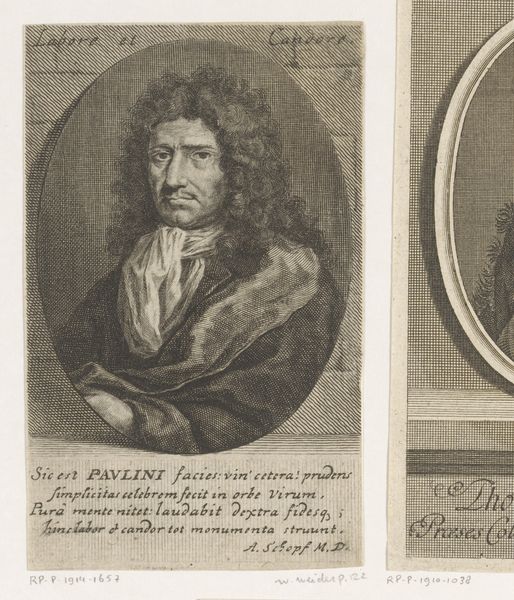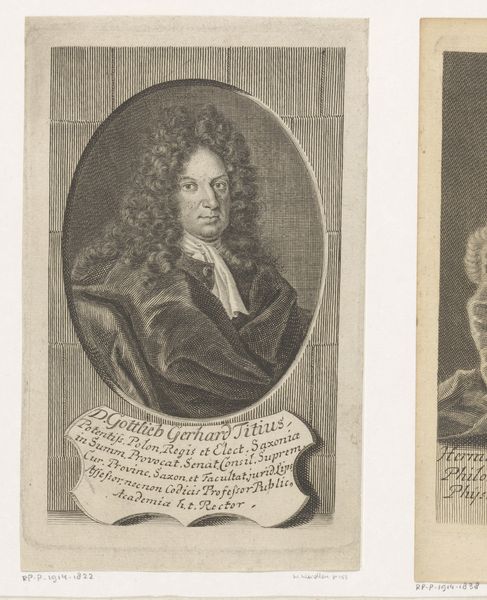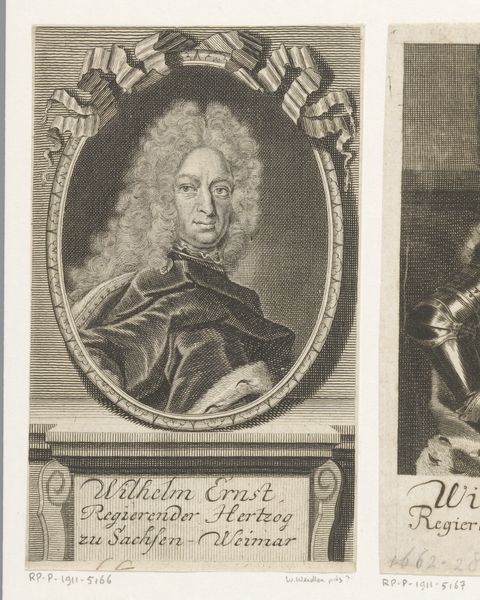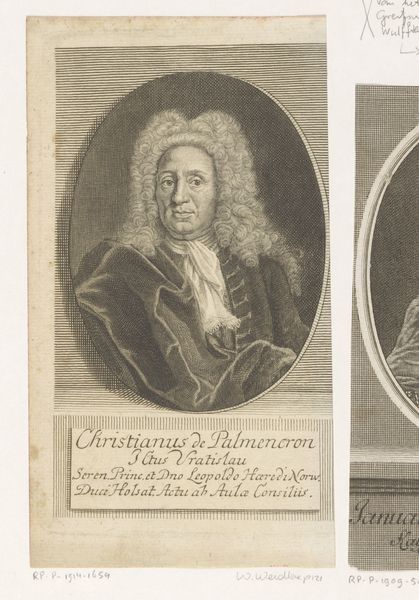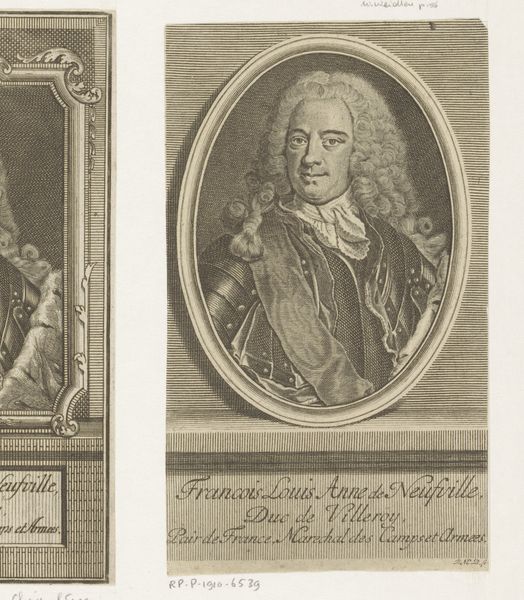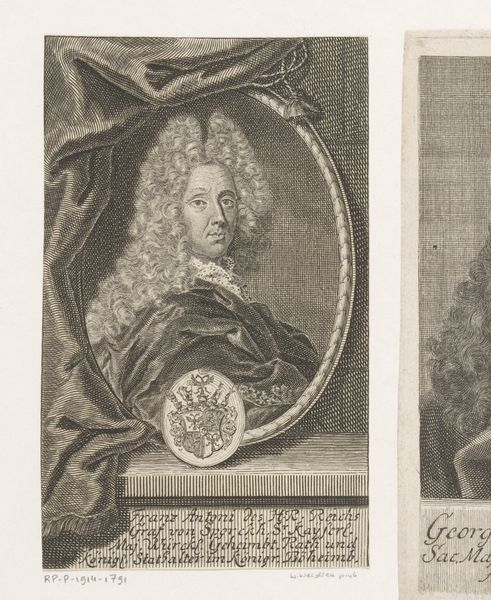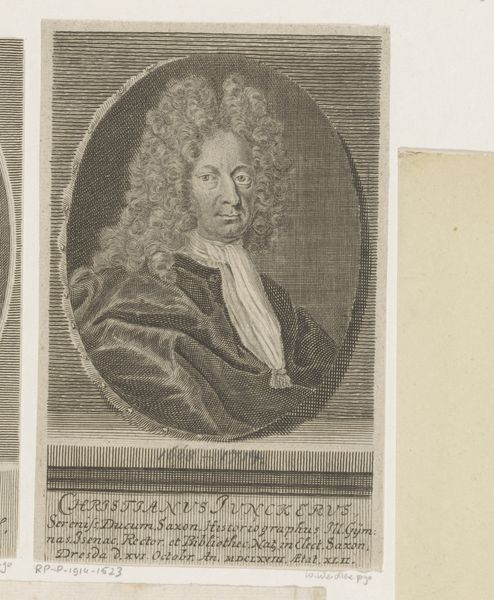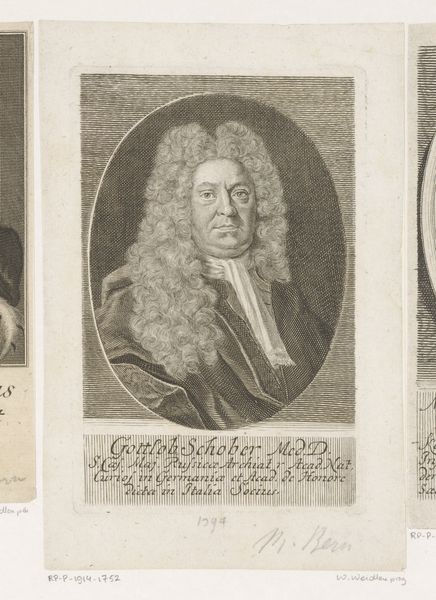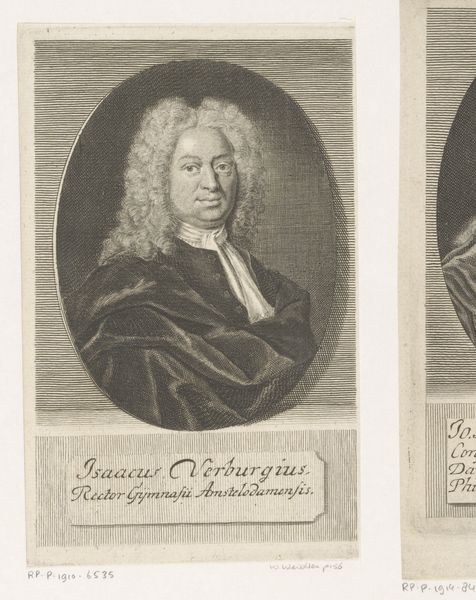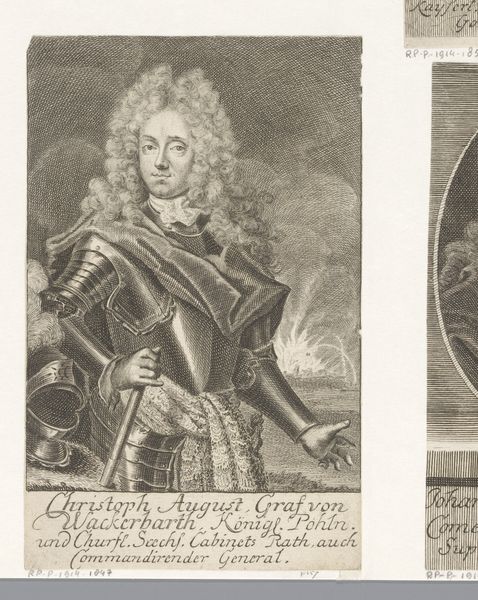
engraving
#
portrait
#
baroque
#
old engraving style
#
history-painting
#
academic-art
#
engraving
Dimensions: height 141 mm, width 85 mm
Copyright: Rijks Museum: Open Domain
Curator: A 1723 engraving of Ulrich Junius by Martin Bernigeroth. The detail achieved with such a labor-intensive process is fascinating, don’t you think? What are your initial thoughts? Editor: It's incredibly detailed, especially the wig! It looks almost photographic, considering it's an engraving. The fine lines used to create shading and texture...it’s impressive. How do you read this piece, considering it’s of a mathematician? Curator: Look at the context. Engravings like this weren't simply about artistic expression; they were about production and distribution. Bernigeroth, as the engraver, reproduced Junius's image, effectively participating in his subject's social capital. It wasn't just *who* was depicted, but how and *why* this image was circulated. Editor: So you're saying the engraving functions more like a commodity or a piece of propaganda, rather than a fine art piece? Curator: Precisely! Think about the time and skill involved. Someone commissioned this. Bernigeroth would have been paid for his labour. Each print then sold or distributed. Consider the consumption of these images. Were they used to affirm status? Build intellectual networks? What does the sheer materiality of this printed image, this repeatable image, *do*? Editor: That reframes the portrait for me completely. I was initially focused on the artistry, but you’ve highlighted the labor, production, and consumption inherent in its creation. It really shifts the focus. Curator: And it's crucial to see beyond just the artistic skill. What new perspective can we draw on art based on the conditions and production processes surrounding them? Editor: I definitely see this artwork differently now, appreciating its social and economic implications alongside its aesthetic qualities. Thanks!
Comments
No comments
Be the first to comment and join the conversation on the ultimate creative platform.

